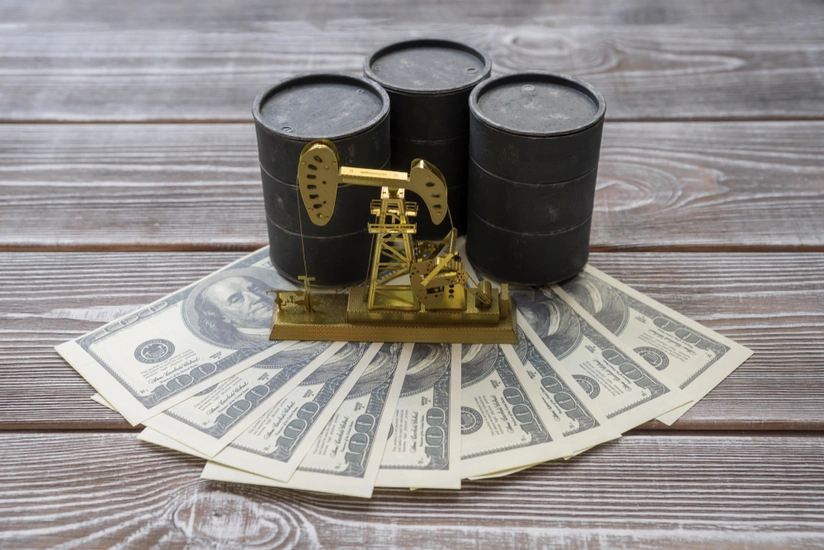WB upgrades forecasts for oil prices, assesses market risks
- 22 October, 2021
- 10:38

Crude oil prices (an average of Brent, Dubai, and WTI) are expected to average $74/bbl in 2022, up from a projected $70/bbl in 2021, and then decline to $65/bbl in 2023, reads a WB October report “Commodity Markets Outlook,” Report informs.
“The forecast is a significant upgrade compared to the April projections, reflecting an improved global growth outlook, as well as a much weaker than expected supply response in 2021 to date. Oil demand is expected to reach its pre-pandemic level in 2022, although estimates for the speed of recovery vary among forecasters. Large EMDEs, notably China, India, and Russia, account for most of the rise in demand, while demand in several advanced economies remains subdued and may not recover to pre-pandemic levels,” reads the report.
Prior to the pandemic, demand in most advanced economies, particularly in Europe, had been declining for several years. Oil demand is expected to be boosted by increasing substitution for natural gas in heating and electricity generation, with estimates that it could raise demand by about 0.5 mb/d. Oil production is forecast to see a robust recovery of around 6mb/d in 2022, according to WB analysts.
“The increase is mostly from OPEC+, which would see the group fully unwind their production cuts by 2022Q3. While some OPEC+ countries such as Angola may struggle to reach their previous production levels due to weak investment, other countries, especially Saudi Arabia, are investing in new projects to increase production capacity. Indeed, as the production cuts are unwound the remaining spare capacity will increasingly be concentrated in a small number of countries, including the Islamic Republic of Iran, Saudi Arabia, and UAE. Outside of OPEC+ most production growth is accounted for by the United States, where output is expected to rise by 1mb/d in 2022 as drilling activity picks up. Production in Canada and Brazil is also expected to grow,” the WB noted.
The increasing use of crude oil as a substitute for natural gas in heating and electricity generation is an emerging risk to the forecast. Industry estimates suggest that this could lead to an increase in oil demand of about 0.5 mb/d, although this could increase if supply constraints persist. Conversely, the surge in energy prices could weigh on global growth in 2022, particularly for oil-importers, dampening demand for oil.
“Additional outbreaks of COVID-19 remain a downside risk to oil demand, as highlighted by recent outbreaks in Asia. The impact of these outbreaks on mobility and therefore oil demand, however, has been much smaller than during the initial months of the pandemic, as lockdowns have become more targeted, and households and businesses adapt.
On the supply side, a return to the Joint Comprehensive Plan of Action for the Islamic Republic of Iran and the removal of sanctions on its oil exports could see the country’s production increase rapidly (by more than 1 mb/d). To the upside, insufficient investment in new production raises the risk that future supply growth will be weaker than demand. Investment in new oil production has been relatively weak since the 2014 oil price collapse, and investment fell sharply in 2020, particularly among oil majors. Shifts in investor preferences and company strategies, including the growth of Environmental, Social, and Governance (ESG) investing, is likely to limit these companies’ investments in traditional new projects going forward. Instead, new projects are likely to be dominated by state-owned oil companies,” reads the report.
“The speed and extent of the energy transition is highly uncertain and estimates for future oil demand vary widely depending on government policies. Estimates by the International Energy Agency and OPEC expect that, under current policies, oil demand may see a further modest increase for several years before plateauing. While adoption of renewable technologies, including electric vehicles, is accelerating rapidly, the speed at which oil consumption recovered after the pandemic, particularly in large EMDEs, highlights the difficulty in reducing its use.
The International Energy Agency has stated that new investment in fossil fuel production must be curtailed to meet the goals of the Paris Accord. To avoid future price spikes, it will be necessary to ensure that either demand for fossil fuels falls commensurately or that supply of low-carbon alternatives is sufficient,” the WB report says.
